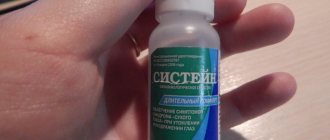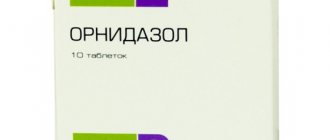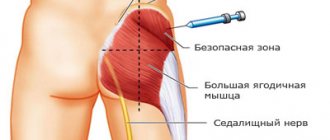Eye diseases are a common problem among the population. Bacterial infection is very common, which is accompanied by suppuration, itching and redness. There are many reasons for this phenomenon. Even failure to comply with hygiene rules can serve as an impetus for the development of the disease. "Oftaquix" - eye drops will help overcome the tormenting problem.
"Oftaquix" - eye drops
Pharmacodynamics and pharmacokinetics
Pharmacodynamics
Chemically, levofloxacin is the L-isomer of the racemate of the drug Ofloxacin . the L-isomer of Ofloxacin that has an antibacterial effect .
An antibacterial agent from the pharmacological group of fluoroquinolones , inhibits the activity of type 2 topoisomerase DNA gyrase and topoisomerase of bacterial cells. The action in the cells of gram-negative microorganisms is directed mainly at DNA gyrase , and in gram-positive microorganisms - at topoisomerase of the fourth type.
Active against gram-negative aerobes : Haemophilus influenzae, Branchamella cataralis, Neisseria gonorrhoeae and Pseudomonas aeruginosa; gram-positive aerobes : Streptococcus pneumoniae, Streptococcus pyogenes, Staphyloccocus aureus.
Pharmacokinetics
After use, levofloxacin is well fixed in the tear film. Typically, the average concentration in the blood 60 minutes after use ranges from 0.86-2.05 ng/ml.
The highest concentration of levofloxacin in the blood is recorded on the fourth day after two days of using the drug eight times a day.
Use during pregnancy
During pregnancy and breastfeeding, you should refrain from taking eye drops. In other words, they are contraindicated. This is because the exact content of levofloxacin is not known. Excessive amounts of it can affect the baby's health. The component also actively penetrates into breast milk, which can negatively affect the baby during feeding.
During pregnancy, it is better to refrain from using Oftaquix.
Side effects
- most often occur: a burning sensation in the eye area, decreased visual acuity, identification of mucous strands;
- less frequently appear: blepharitis , growths in the form of papillae on the conjunctiva, swelling of the eyelids, chemosis , discomfort in the eye area, pain or itching in the eye area, development of follicles on the conjunctiva, contact dermatitis , hyperemia erythema eyelids , dry eye syndrome , photophobia, eye irritation and allergic reactions;
- other reactions: rhinitis and headache .
Oftaquix eye drops
Oftaquix is a strong antibiotic that comes in the form of eye drops.
The active ingredient in Oftaquix eye drops is levofloxacin. This is an antibiotic from the group of 3rd generation fluoroquinolones.
Analogs Analogues of Oftaquix are ophthalmic potassium levofloxacin and signicef.
Indications Oftaquix is used to treat bacterial infections of the eye, including purulent ones. It is often the antibiotic of choice for complicated eye infections, such as bacterial endophthalmitis, keratitis, corneal ulcers, and severe uveitis. It is also used as a prophylactic drug during eye surgeries, especially abdominal ones, such as cataract removal, anti-glaucoma surgeries, vitrectomy and others, to prevent bacterial infections from entering the eye.
Do not use this medication for mild eye infections such as conjunctivitis. Why you ask? Although bacterial resistance to Oftaquix develops slowly, it still exists. And if you use it frequently, irregularly, or without following the instructions, resistance may develop. And if in the future you need to treat any serious eye infection that no other antibiotics can overcome, then it is very important that the infection does not have resistance to Oftaquix.
Application As for the instillation regimen of eye drops, it is determined by the doctor. Typically 1-2 drops are applied 3-6 times a day depending on the severity of the infection. The duration of instillation is also determined by the doctor, but it should not be less than 5-7 days.
Side effects Oftaquix has side effects the same as its active ingredient - levofloxacin, but since eye drops are applied topically, their concentration is small and absorption into the general bloodstream is not significant, as a rule, side symptoms manifest themselves in the form of allergic reactions: burning, itching, redness, swelling of the tissues of the eye and adnexa.
Contraindications Oftaquix is contraindicated in pregnant women, breastfeeding women, children under one year of age and people intolerant to levofloxacin. Oftaquix is not used in newborns.
Price and form of release The price can vary widely and depends on the form of release.
Oftaquix is available in two versions. The first is a 5 ml dropper tube containing levofloxacin with preservatives, the second form is disposable 0.5 ml dropper tubes in an amount of 10 pieces. They contain levofloxacin without a preservative, for people with allergies to these substances.
Reviews Reviews about Oftakvix are mostly positive. Ophthalmologists and ophthalmic surgeons have special respect for it, since it is a reserve drug for severe eye infections, as well as extensive ophthalmic surgical interventions.
special instructions
These eye drops cannot be used subconjunctivally or injected into the anterior chamber of the eyeball.
When using other ophthalmic agents together, the interval between their use should be more than 15 minutes.
This medication should not be used while wearing hydrophilic contact lenses.
To prevent contamination of the dropper and the drug solution, the tip of the dropper of the bottle should not come into contact with the periorbital tissues.
Indications for use
Oftaquix drops are indicated for use in various types of superficial eye lesions due to infections, gram-positive and gram-negative bacteria, bacterial corneal ulcers, chronic and acute inflammation of the mucous membrane of the eyes. The drug is prescribed for the treatment of conjunctivitis, blepharitis, keratitis, dacryocystitis and meibomitis.
Oftaquix received positive reviews as an effective drug for the prevention of complications after eye surgery and during the rehabilitation period.
Oftaquix has many good reviews as an effective remedy for the treatment of infectious complications, inflammatory processes and the effects of foreign bodies on the eyeball and adnexa.
Oftaquix's analogs
Level 4 ATX code matches:
Dancil
Oftadek
Signitsef
Vitabact
Okomistin
Tsiprolet
The most common analogues: L-Optic Rompharm, Signicef, OD-Levox, Zimaxid, Oftalmodek, Povisep, Ciborat-Oftan, Posiformin.
Contraindications
There is no reliable data on the use of the drug during pregnancy. Therefore, Oftaquix is not recommended for pregnant women or nursing mothers.
Drops are advised to be used with caution in children - if the child is under 1 year old, then the medicine should not be used .
It is also possible to develop intolerance to some components: increased hyperemia, severe itching, proliferation of follicles on the conjunctiva, dry membranes are its symptoms, in this case it is recommended to replace the drug with another one.
During instillation of Oftaquix, vision loss may occur for several minutes. Therefore, before you drive or start doing dangerous work, you should wait until your eyes are completely healed.
If you accidentally instill a large dose of the drug, no toxic effect is observed, so you can simply rinse your eyes with tap water.
Oftaquix price, where to buy
In Russia, the price of Oftaquix eye drops is 207-242 rubles, in Ukraine it starts from 130 hryvnia.
- Online pharmacies in RussiaRussia
- Online pharmacies in UkraineUkraine
- Online pharmacies in KazakhstanKazakhstan
ZdravCity
- Oftaquix drops hl.
0.5% 5mlSanten OY RUB 205 order
Pharmacy Dialogue
- Oftaquix (eye drops 0.5% 5ml)Santen
RUB 224 order
show more
Pharmacy24
- Oftaquix 0.5% 5mg/ml 5 ml eye drops Santen AT, Finland
169 UAH.order - Oftaquix 5 mg/ml 0.3 ml No. 10 eye drops Santen AT, Finland
230 UAH. order
PaniPharmacy
- Oftaquix liquid Oftaquix h/c 5ml Finland, Santen
192 UAH order
show more
Instructions for use of Oftaquix
According to the instructions, Oftaquix is used topically, instilling the drug into the corner of the eye or onto the affected area of the mucous membrane. For 2-3 days, use 2 drops of the drug in each eye, and then the dosage is increased to 4 drops per day. The duration of treatment should be determined by the attending physician, who throughout the course adjusts the dosage in accordance with the patient’s indications and the type of eye disease. The average duration of treatment is 5-10 days.
According to the instructions, Oftaquix should not be prescribed to pregnant women, as it has side effects on the fetus. If there is a high need for the drug, breastfeeding is canceled.
The Oftaquix instructions prescribe compliance with the interval in taking other ophthalmic drugs. Oftaquix should not be instilled into the anterior chamber of the eye, and these drops are not recommended for use when wearing soft contact lenses.
Contraindications for use
The instructions say that Oftaquix has a minimal number of contraindications. These include:
- age under 1 year;
- pregnancy, breastfeeding;
- hypersensitivity to components.
An allergic reaction to the main substance is manifested by redness, burning in the eye, copious discharge of tears, and mucus from the nose. Other side effects include headache, swelling under the eyes.
Compound
Oftaquix eye drops
The product is produced by the Finnish company Santen JSC. Externally, the medicine is a light yellow, transparent liquid. The drug is packaged in a standard plastic dropper package. The doctor prescribes Tobrazon eye drops for viral conjunctivitis.
The main active component of the drug is the substance ofloxacin (isomer). Among the auxiliary components are the following:
- benzalkonium chloride;
- purified water.
Luxfen is successfully used to treat glaucoma.
You can purchase this product at the pharmacy only strictly with a doctor's prescription.
Reviews
Antibacterial drops can provide relief from the symptoms of the disease only if there is a pathogen in the eyes that reacts to the components of the drug.
Only an experienced ophthalmologist can identify the nature and origin of eye problems, so self-treatment is not always beneficial.
Some reviews on thematic sites note the lack of the desired effect from the use of drops.
On the other hand, you can find many positive reviews on the sites after using the drug. Parents of young children are especially pleased with the use of drops.
It is no secret that during the period of adaptation to preschool institutions, children often suffer from bacterial conjunctivitis, the occurrence of which is caused by many different pathogens. Mothers note that a positive result is often observed when Oftaquix is instilled in cases where other antibacterial drugs have not helped.
Read further - instructions for Okomistin eye drops. Reviews and analogues of these drops.
In the news (here) instructions for use for Tetracycline ophthalmic ointment.
Analogues of Tropicamide eye drops!
Analogues of the drug
In some cases, Oftaquix is contraindicated for use or causes side effects, so it is necessary for treatment to choose similar drugs with a similar mechanism of action, but with different components in the composition.
These drugs include Albucid, Floxal, Levomycetin. When replacing one drug for the treatment of eye infections with another, you must consult with your doctor, because all drugs have certain indications and contraindications.
When prescribing medications, the ophthalmologist takes into account not only the clinical picture of the disease, but also the presence of concomitant ailments and visual disorders.
How to use
In the first two days of using this medicine, instillation is required every two hours - during the daytime, of course. However, the number of procedures should not reach more than eight times per knock. Information about analogues of Cyclomed in the eyes can be read on our website.
The product is injected under the upper eyelid. It is important to instill not only into the eye affected by conjunctivitis, but also into a healthy one - for the purpose of prevention. Okopin is a universal vitamin complex for improving vision.
Bacterial infections are known to spread extremely quickly. Starting from the third day of use, the total number of instillations per day should not exceed four times. Fucithalmic instructions are located in our article.
Drops can also be used in complex treatment - however, it is necessary to maintain a pause of at least 15 minutes between drug administrations. Contact lenses must be removed before installation.
Pharmacology
The active components of the drug are able to quickly and deeply penetrate the tissues of the affected eye: thus, the effect occurs at the cellular level. Timolol Akos eye drops reduce intraocular pressure.
After administration of the drug, the active substance is concentrated on the cornea, conjunctiva, and its high content is also observed in the tear fluid. The effect lasts about six hours after instillation. The composition of Poludan can be found here.
Positive “bells” are noticeable just a day after the first instillation. Discomfortable sensations begin to become less noticeable: itching, tearing, swelling, pus discharge. Lecrolin eye drops are a real salvation for allergic conjunctivitis.











